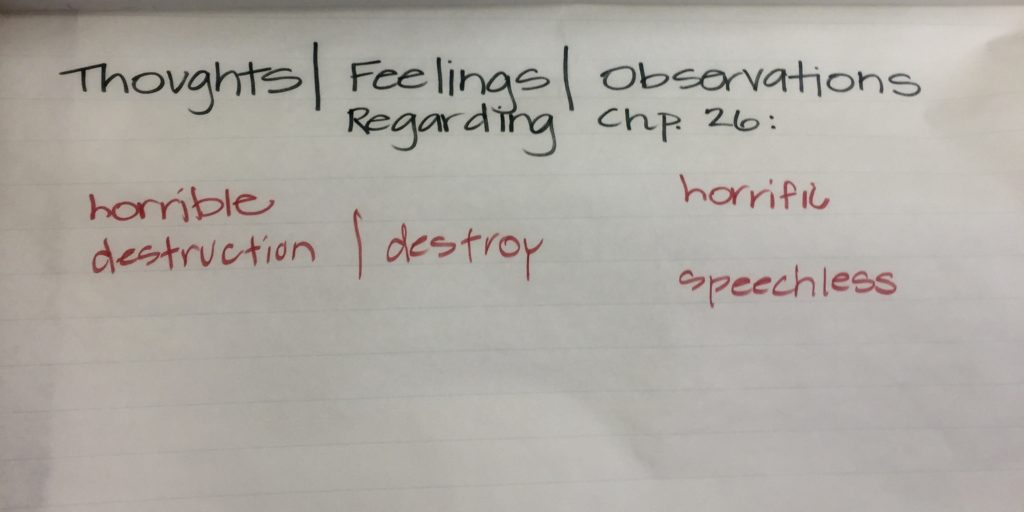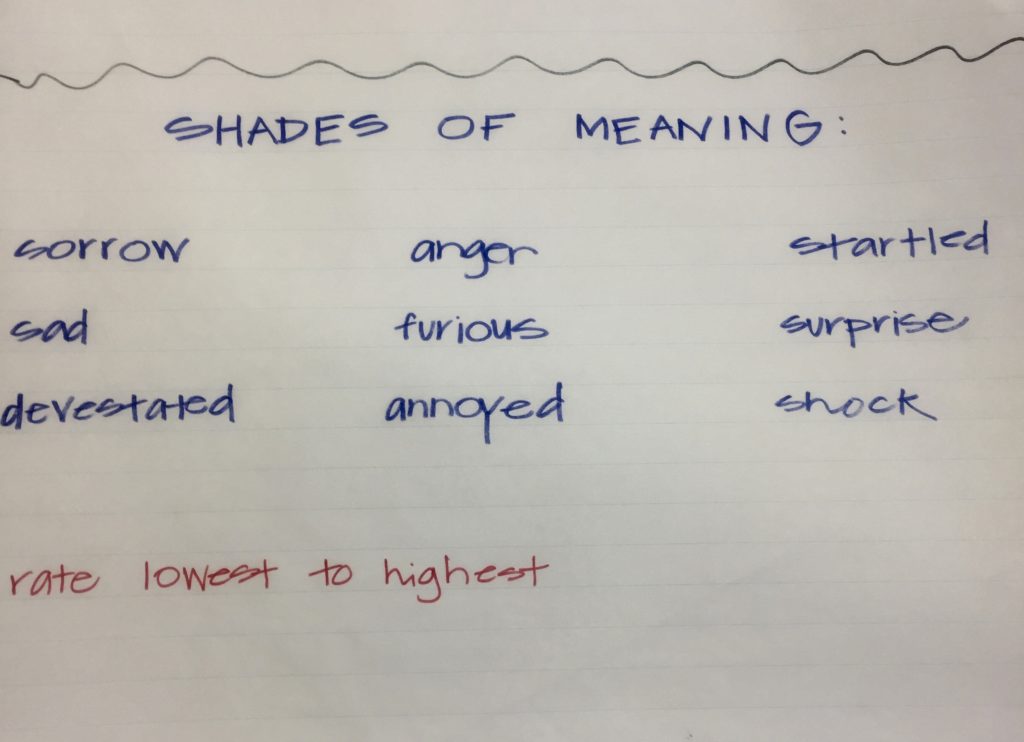Each month, I write a little column for my district’s newsletter capturing a little of what goes on in the libraries I work in. Here is this month’s essay:
I was in 5th grade, in Ms. Savage’s class (Savage is an unfortunate name for a teacher, but I liked her), and we were cleaning out our desks, catching up on late work, and organizing our lockers. Papers and old lunches were everywhere. Kids were talking and laughing. Ms. Savage was writing to-dos on the chalkboard and giving out commands. The place smelled like bologna sandwiches and orange peels, pencil shavings and paper.
I began to cry.
One of the things I loved about Ms. Savage was she was tough, and she didn’t take “no nonsense from nobody.” She didn’t have a hot second for whining, tattling, or any other hemming and hawing. We were there to listen to her and to learn from her.
When she saw me crying, she started walking briskly towards me as though I had just broken my arm. “Whatsa matter? Whatsa matter?” She asked.
Her question, spoken so urgently and close to me, made me cry harder. I didn’t want to disappoint her, and worst, I didn’t really know why I was crying.
“There’s a lot going on,” is all I could say.
I remembered she flinched and sort of stepped back, like she’d just caught a line drive. She didn’t laugh. She didn’t look angry or confused. It seemed from the look on her face that she understood something about me that she hadn’t before; something I couldn’t articulate but it was OK because she understood, and she would take care of what she understood.
“Who’s your friend?” she asked.
“Julie,” I muttered, wiping my nose with my hand.
Five minutes later, Julie and I were in the bathroom, she wetting a brown paper towel for my face and I leaning against the tiled wall, bending and piling my fingers on top of each other over and over, a habit I had when I was feeling anxious.
Sometimes, teachers can give us over to our friends when we’re feeling uncertain, overwhelmed, confused. Sometimes though, teachers can allow for this kind of grappling, or coming to terms with feelings and situations that are hard within the curriculum they are teaching. As a librarian, I find many opportunities to do this through stories.
At YIES, the 5th graders and I are reading Holes, a sort of story within a story, within a story. It’s a funny, adventurous story, but like all worthwhile tales, it’s sad and scary, and it leaves readers with much to process.
One afternoon I said just that to the 5th graders: “This chapter packs a punch, you guys. Hang on.”
The chapter I read goes like this: Sam, a black man, falls in love with Katherine Barlow, a white woman, who reciprocates his feelings. In a sweet scene with a line from Sam that would’ve made my high school heart melt, along with a sweet kiss, Sam and Katherine commence what would’ve surely been a romance for the books. Sadly, the town thinks that love between black and white people shouldn’t happen, and in a horrifying turn of events, Sam is killed. Katherine’s love was literally stolen from her, and she becomes Kissin’ Kate Barlow – one of the greatest outlaws in the West – the gal who kisses the men she robs just before she kills them.
So the 5th graders went from processing a love story, racism, murder, and the ramifications of a stolen love all in about ten pages. It’s a lot to tackle for 10 and 11 year olds.
However, just because it’s a lot, doesn’t mean we shouldn’t give students a chance to unpack their feelings and reactions to what they’re reading, so after we read the chapter, I asked the students to give me some words to describe how they felt after hearing this part of the story. “Anger,” “speechless,” and “destruction” were some of the words they suggested.
“Good,” I said. “You’re giving me words that describe the intensity of the situation.” I went on to explain that nobody said the town was “naughty,” or “did a very bad thing.” Words like disgust, terror, and outrage are more appropriate, whereas “naughty and bad” insinuate somebody needs a time out.
I used the chapter from Holes to introduce this concept of “different shades of meaning,” a concept that is introduced in the curriculum. Here, students are to take three similar words and put them in order from lowest to highest. For example, “startled,” might come before “surprised,” and “shocked” would be at the highest level for words that describe a state of amazement. On chart paper, I wrote groups of words in threes, and asked the class to rate them from lowest to highest. This is a good opportunity to discuss when we might use these words, giving students context for when they might use “sorrow” as opposed to “sad,” and helping them insert themselves and their lives into these words.
For example, I was surprised on my 14th birthday when my friends threw me a surprise party, but I was shocked when one day, I was on a run and saw a dog get hit by a car. In both instances, it felt like the world stopped, but for very different reasons.
I had the class practice this same concept in groups of threes. They sorted cards with words that expressed the same idea, but at different levels of intensity. Then, I had them try to use those words in their writing.
These kinds of lessons need lots of practice, and many times, the first attempts are confusing and frustrating. But it’s good to give students the tools, in this case, words, to express themselves, their feelings, and their perspective on life. Working with words this way helps them to uncover different layers and nuances of how they feel and think about a situation.
Once, Ms. Savage had us put the skin of an onion under a microscope. “Boring,” we all thought. Where are the cow’s eyes? When can we dissect a frog? One look from Ms Savage though, and we knew not to challenge her. We prepared those slides quietly, clipped them onto the tiny shelves, and adjusted the light. Sure enough, we saw patterns and colors – like a prism – we’d never seen before. Who knew something that looked so thin, and quite frankly, simple, could hold so much pattern and color?
Fifth grade was decades ago, but I will never be able to slice an onion, or peel it’s skin without thinking of Ms. Savage and all she helped me see; all the layers of myself she helped me to understand, and the greatest lesson, that even the seemingly weakest and simplest thing of all holds all sorts of surprises.
**Hop over to my “Books” page, and see the cover of The Teacher Diaries: Romeo and Juliet out this Valentine’s Day! While you’re at it, subscribe to my blog to get updates on the book and where it’ll be sold.



Leave a Reply